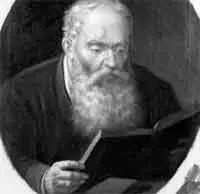 Understand the Seven Attributes of Mass
Understand the Seven Attributes of Mass
When you talk about matter mass will always be a part of the subject. What is mass? In simple terms mass is the amount of matter contained in a particle or an object. Generally, mass is always mistaken to be the same as weight. Actually, they are different for weight will have its meaning only when a specific mass is affected by gravity.
Mass is measured in units of kilograms or 1000 units of gram. However, there are also other units accepted in International Systems of Units (SI).
Ton (t) is equal to 1,000 kilograms.
Electronvolt (eV) is used in measuring energy and commonly used in particle physics.
Atomic mass unit (u) is used in mass, atoms and molecules expressions.
There are also other acceptable units of measure outside the SI.
- Slug (sl)
- Pound (lb)
- Planck Mass (Mp)
- Solar Mass (Mo)
In Physics, there are seven known physical phenomena related mass.
The Quantity of Matter
This explains that the number of molecules and atoms in a matter and the energy involved in binding them together is what physicists call mass.
Inertial Mass
This attribute has something to do with force being applied towards an object. It measures the resistance of an object when a force is applied. The principle here is that an object with greater mass contains more inertia than an object with lesser mass.
Active Gravitational Mass
This can be explained by the gravitational pull of the Moon and Earth. When a man is on the Moon, the gravitational pull is weaker than that of when a man is on earth. It simply means that Moon has lesser active gravitational mass.
Passive Gravitational Mass
In passive gravitational mass, the measurement focuses more on the object. It is said the object with greater passive gravitational mass will experience a greater force and vice versa.
Energy
According to physicists, energy also contains mass and it is under the principle of mass-energy equivalence. Equivalence means physical processes such as pair production, gravitational light bending and nuclear fusion.
Curvature
Due to Einstein’s theory of general relativity, curvature was discovered. This may be explained by precise atomic clocks. If you use two similar atomic clocks on earth and the other one on space, you will notice that the clock here on earth runs slower. The difference of the time elapsed by the two clocks is a form of curvature. This difference is also known as gravitational time dilation.
Quantum Mass
This has something to do with an object’s quantum frequency and its wave number. The difference between the two is the quantum mass. Quantum mass can be measured by different forms of spectroscopy. A watt balance is used to measure a larger object’s quantum mass.
Various mass-related phenomena are said to conceptually distinct. Examples are the inertial mass and gravitational mass. It is said that as of now these mass-related phenomena are proportional. However, if future tests will show that there is one phenomenon that result to be not proportional to others, it will no longer be considered as part of these phenomena.










Leave a Reply